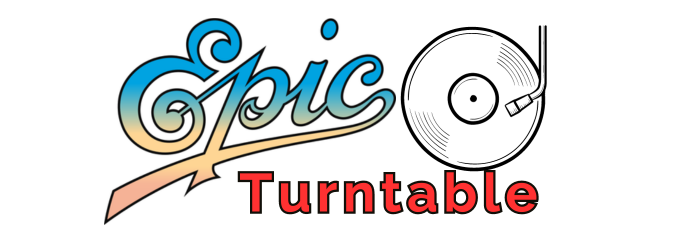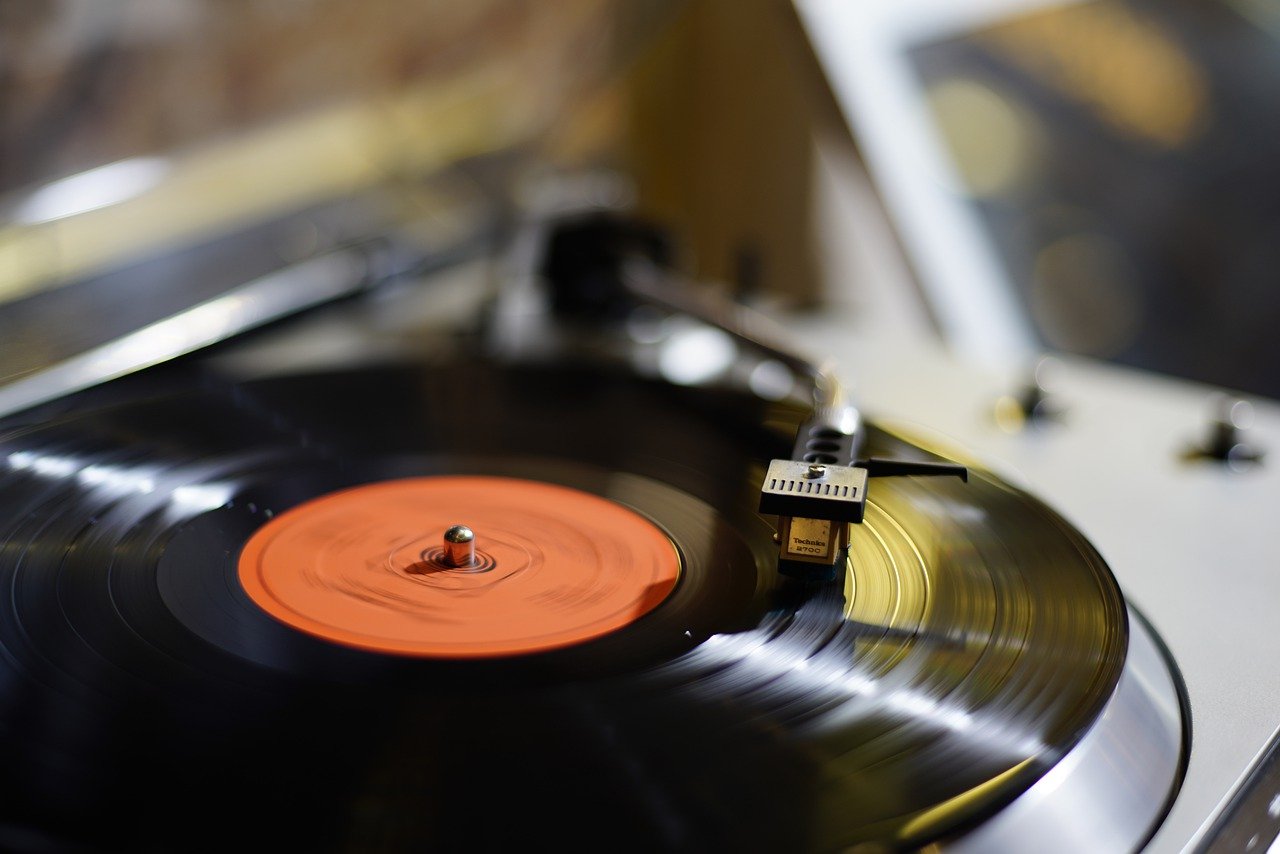Are you a fan of vinyl records? Perhaps you’ve come across a few 78 RPM records and are wondering if they can be played on a regular turntable record player. Well, the good news is that, with a few adjustments, you can indeed enjoy those nostalgic tunes from decades past. In this article, we’ll explore how to play 78 RPM records on your turntable, so you can make the most of your musical collection.

Understanding 78 RPM Records
What are 78 RPM records?
78 RPM records, also known as 78s, are a type of audio recording that were commonly used from the late 19th century until the mid-20th century. They are made of shellac, a brittle and black resin-like substance, which makes them fragile compared to modern vinyl records. 78 RPM records were the primary format for commercial recordings from the 1890s to the 1950s.
How were 78 RPM records produced?
To produce a 78 RPM record, the process involved using a master recording that was made on a disc-cutting machine. This recording would then be used as a template to press copies onto a 10-inch or 12-inch disc made of shellac. The shellac discs were then coated with a layer of wax to create a smoother surface for the record’s groove.
Characteristics of 78 RPM records
78 RPM records have several distinguishing characteristics. Firstly, they rotate at a speed of 78 revolutions per minute, hence the name. The material used, shellac, is more brittle and susceptible to damage than vinyl records, making 78s more prone to warping and breaking. They are also much larger in size compared to modern records, typically measuring 10 inches or 12 inches in diameter. The groove size and shape on 78 RPM records are different from vinyl records as well, affecting the sound quality and playback. Lastly, due to limitations in the recording and playback technology of the time, 78s often had a limited frequency range and dynamic range.
Differences Between 78 RPM Records and Vinyl Records
Speed
The most notable difference between 78 RPM records and vinyl records is the rotational speed. While 78s played at 78 revolutions per minute, vinyl records typically play at 33⅓ or 45 RPM. This speed discrepancy means that a turntable designed for vinyl records will not be able to play 78 RPM records without modification or additional features.
Material
Another significant difference lies in the material used to manufacture the records. 78 RPM records are made of shellac, which is more brittle and less durable than the vinyl used for modern records. Vinyl records, on the other hand, are made of polyvinyl chloride (PVC), offering enhanced durability and longevity.
Size
78 RPM records are typically larger in diameter than vinyl records. Most 78s are 10 inches or 12 inches, while vinyl records are commonly 7 inches, 10 inches, or 12 inches. The larger size of 78 RPM records allows for greater surface area, which can result in improved sound quality and louder volume.
Groove Size and Shape
The groove size and shape on 78 RPM records differ significantly from those on vinyl records. 78s have wider grooves and a different groove shape, which requires a different type of stylus to properly track the grooves. Vinyl records have narrower and more uniform grooves, allowing for the use of a small needle that can play them accurately.
Loudness and Dynamic Range
Due to the limitations of the recording and playback technology used during the era of 78 RPM records, they often have a limited dynamic range and less volume compared to vinyl records. Modern vinyl records offer a wider dynamic range and can deliver a more immersive listening experience.
Playing Time
Another noticeable difference is the playing time of 78 RPM records compared to vinyl records. Due to the wider groove spacing and faster rotation speed, 78s usually hold only one song per side, resulting in a shorter playing time. Vinyl records, especially LPs, can hold multiple songs on each side, allowing for a longer playing time per side.
Compatibility of 78 RPM Records with Turntable Record Players
Are modern turntable record players compatible with 78 RPM records?
By default, most modern turntable record players are not compatible with 78 RPM records. The rotational speeds supported by modern turntables are typically limited to 33⅓ and 45 RPM, omitting the higher speed required for 78s. However, there are some specialized turntables available that offer variable speed control or specifically include support for 78 RPM playback.
What do I need to play 78 RPM records on a modern turntable record player?
To play 78 RPM records on a modern turntable, you will need either a turntable model that supports 78 RPM playback or a separate accessory called a phono preamp with a built-in switchable 78 RPM speed. Additionally, you will need to use a cartridge and stylus that are compatible with 78 RPM records, as the wider and different groove shape requires a specific type of stylus to correctly track the grooves.
Identifying a turntable with 78 RPM support
When looking for a turntable capable of playing 78 RPM records, it’s important to check the specifications or consult with the manufacturer. Some turntables clearly state their compatibility with 78 RPM playback, while others may require additional accessories or modifications. It’s always recommended to do thorough research and read customer reviews to ensure the chosen turntable meets your specific needs.
Options for Playing 78 RPM Records
Using a Vintage Phonograph
One option for playing 78 RPM records is to use a vintage phonograph or record player specifically designed for these records. Vintage phonographs were built to accommodate the larger size, heavier weight, and higher rotational speed of 78s. They often have automatic speed control and stylus mechanisms suitable for playing these records. While using a vintage phonograph can provide an authentic experience, finding a well-maintained and functional model can be a challenging and expensive endeavor.
Using a Modern Turntable with 78 RPM Capabilities
If you prefer the convenience and versatility of a modern turntable, there are models available that include 78 RPM support. These turntables often have a variable speed control feature, allowing you to adjust the rotational speed to match the required 78 RPM. Some models may even come with a built-in switchable speed for 78 RPM playback. It’s essential to check the specifications and ensure the turntable can accommodate the larger size of 78 RPM records.
Using a Turntable with Variable Speed Control
If your existing turntable does not have built-in 78 RPM support, you can consider using a separate phono preamp with variable speed control. This accessory sits between the turntable and your receiver or amplifier and allows you to adjust the speed according to the record being played. However, it’s important to note that using variable speed control may not provide the most accurate playback compared to a turntable specifically designed for 78 RPM records.
Modifying a Turntable for 78 RPM Playback
For those who are technically inclined, another option is to modify an existing turntable to add 78 RPM playback capabilities. This typically involves adjusting the motor speed and installing a suitable cartridge and stylus for playing 78 RPM records. However, modifying a turntable requires a good understanding of its mechanics and electronics, and improper modifications can potentially damage the turntable or void any warranty.

Precautions and Care When Playing 78 RPM Records
Handling the Records Properly
Due to their fragility, it’s important to handle 78 RPM records with care. Always hold them by the edges to avoid touching the playing surface, as any fingerprints or dirt can affect the sound quality. It is advisable to clean your hands thoroughly before handling these records and avoid placing them on surfaces that may scratch or damage them.
Cleaning the Records
Maintaining clean and dust-free records is crucial for optimal playback quality. Use a record cleaning brush or a specialized record cleaning solution to gently remove any dust or debris from the surface of the 78 RPM records. It’s important to avoid using abrasive materials or excessive pressure that could damage the delicate shellac material. Regular cleaning can help preserve the sound quality and prevent unnecessary wear and tear.
Using the Correct Needle
To maximize the lifespan of both your records and your turntable, it’s essential to use the correct needle or stylus for playing 78 RPM records. Unlike vinyl records that can be played with a finer, conical stylus, 78s require a wider and longer stylus due to the wider grooves and different groove shape. Using an incorrect stylus can lead to poor tracking and potential damage to the record.
Adjusting the Tonearm
When playing 78 RPM records, it’s important to make sure the tonearm of your turntable is properly adjusted. The tracking force, which is the pressure applied by the stylus on the record, should be set according to the manufacturer’s instructions for your specific cartridge and stylus. Incorrect tracking force can cause distortion and excessive wear on the 78 RPM records.
Storage and Preservation
To protect your 78 RPM records from damage, it’s important to store them properly. Use acid-free record sleeves or polyethylene inner sleeves to prevent dust accumulation and minimize the risk of scratches. Store the records in an upright position to avoid warping and keep them away from direct sunlight or excessive heat, which can cause the shellac to deteriorate.
Potential Issues When Playing 78 RPM Records
Warping
One common issue that can occur with 78 RPM records is warping. Due to the fragile nature of shellac, exposure to heat, pressure, or improper storage conditions can cause the records to warp. Warped records may not play correctly or can damage the stylus and tonearm of your turntable. Proper storage and handling can help prevent warping.
Surface Noise
When playing 78 RPM records, you may encounter more surface noise compared to vinyl records. This noise can include pops, crackles, and hisses, which are inherent to the recording and playback technology of the time. While some surface noise is expected, excessive noise may indicate a dirty or damaged record, or issues with the stylus or tonearm setup.
Stylus Durability
Due to the nature of shellac and the wider grooves on 78 RPM records, the stylus can wear out more quickly compared to playing vinyl records. The fragile shellac material can sometimes cause the stylus to skip or jump, affecting the sound quality and potentially damaging the record. Regularly inspecting and replacing the stylus when necessary can help prevent unnecessary wear and damage.
Speed Variations
Another potential issue when playing 78 RPM records is speed variations. Over time, the motor of a turntable can become less stable, resulting in fluctuations in rotational speed. These variations can affect the pitch and playback quality of the 78 RPM records. Regular maintenance and calibration of the turntable can help minimize speed variations.
Record Wear and Tear
Repeated plays of 78 RPM records can lead to gradual wear and tear. The friction between the stylus and the shellac grooves can result in groove distortion, surface noise, and ultimately the loss of high-frequency details. To extend the lifespan of your records, it’s advisable to limit the number of plays, clean them regularly, and handle them with care.

Finding and Collecting 78 RPM Records
Where to find 78 RPM records
Finding 78 RPM records can be a treasure hunt for collectors and enthusiasts. Secondhand stores, thrift shops, flea markets, and garage sales can be great places to stumble upon these records. Online marketplaces and auction sites can also offer a wide selection of 78s. Additionally, there are specialized record stores and online stores that cater to collectors’ needs.
What to consider when buying 78 RPM records
When buying 78 RPM records, it’s important to consider the condition, rarity, and desirability of the records. Look for records without visible cracks, chips, or excessive scratches, as these can affect playback quality. Original pressings, records from popular artists or labels, and records in genres that interest you are generally more desirable for collectors.
Popular genres and artists on 78 RPM
78 RPM records were produced across a wide range of genres, including jazz, blues, classical, country, big band, and popular music of the time. Jazz and blues records are particularly sought after by collectors due to the historical significance and the contributions of legendary artists such as Louis Armstrong, Duke Ellington, and Bessie Smith. Classical music aficionados can also find a wealth of recordings from renowned orchestras and composers on 78 RPM records.
Conclusion
While 78 RPM records may have become overshadowed by modern vinyl records and digital formats, they retain a nostalgic charm and historical value for collectors and audiophiles. Understanding the differences between 78 RPM records and vinyl records, as well as the precautions and care required when playing them, is essential to ensure the best possible listening experience and the preservation of these vintage treasures. Whether using a vintage phonograph, investing in a modern turntable with 78 RPM capabilities, or modifying an existing turntable, playing and collecting 78 RPM records can provide a unique glimpse into the rich musical history of the early 20th century.

Hi there! I’m Eric Hoffman, the author behind EpicTurntable.com. I’m passionate about revolutionizing your music experience through vinyl. At EpicTurntable.com, you’ll find everything you need – from turntables and vinyl records to accessories. Whether you’re an audiophile or just starting out, I offer expert reviews, insightful articles, and the latest trends in the world of turntables. Dive into our community forums to connect with fellow vinyl lovers, or explore our online store for exclusive deals. Join me at EpicTurntable.com, where I’m dedicated to bringing you the classics and the latest hits all in one place!

